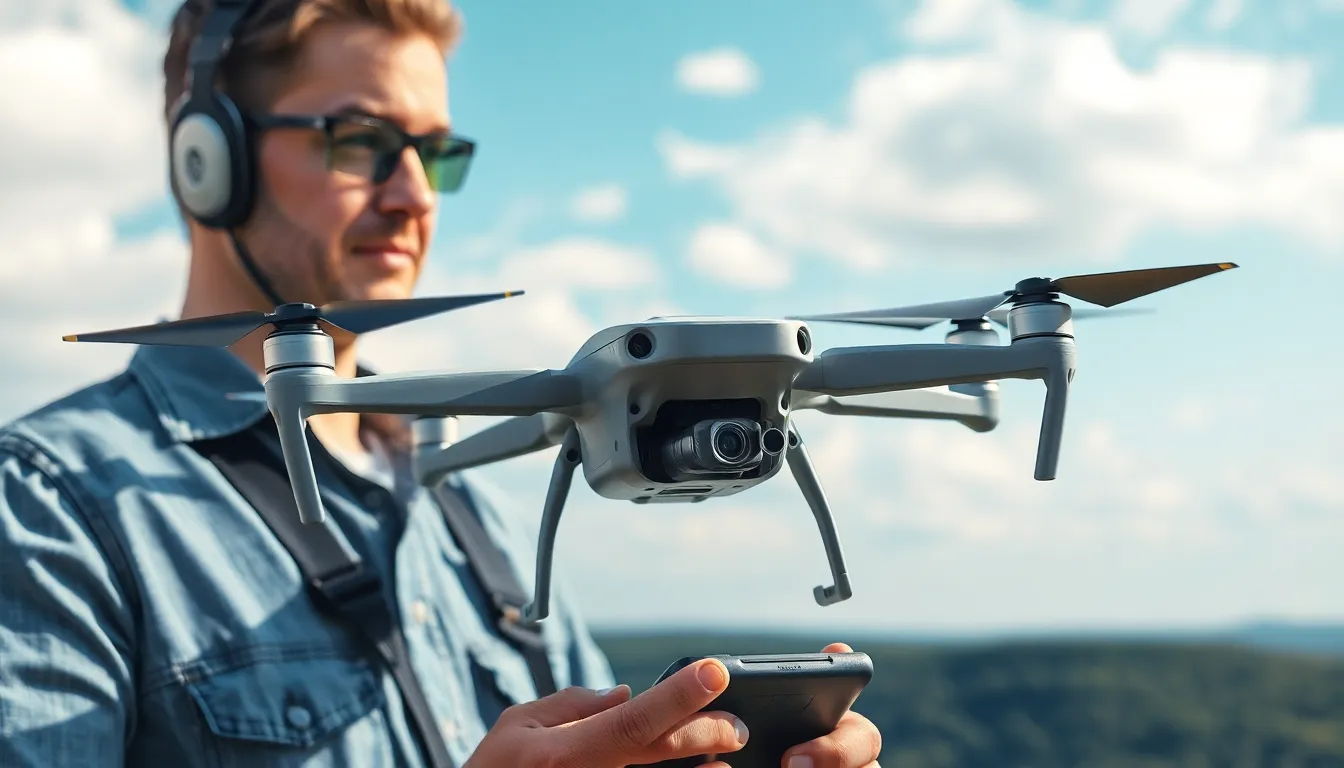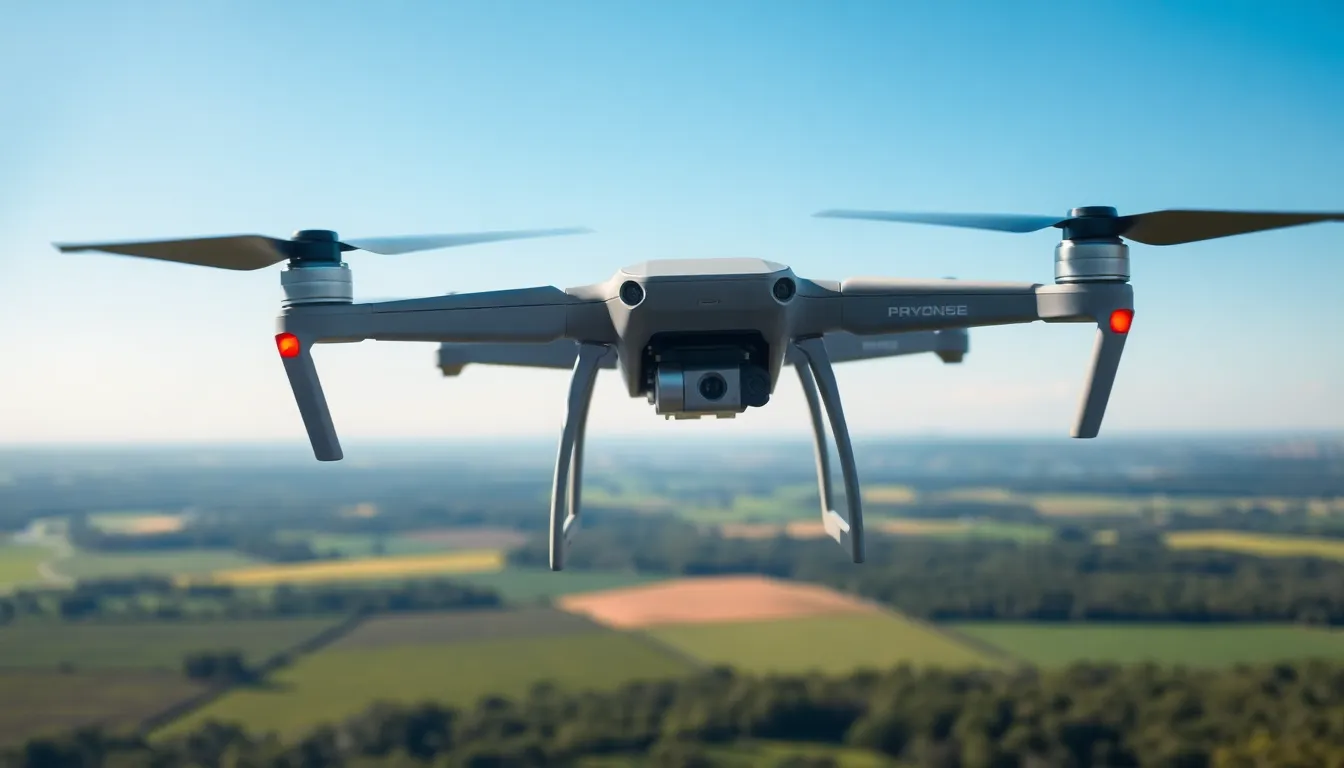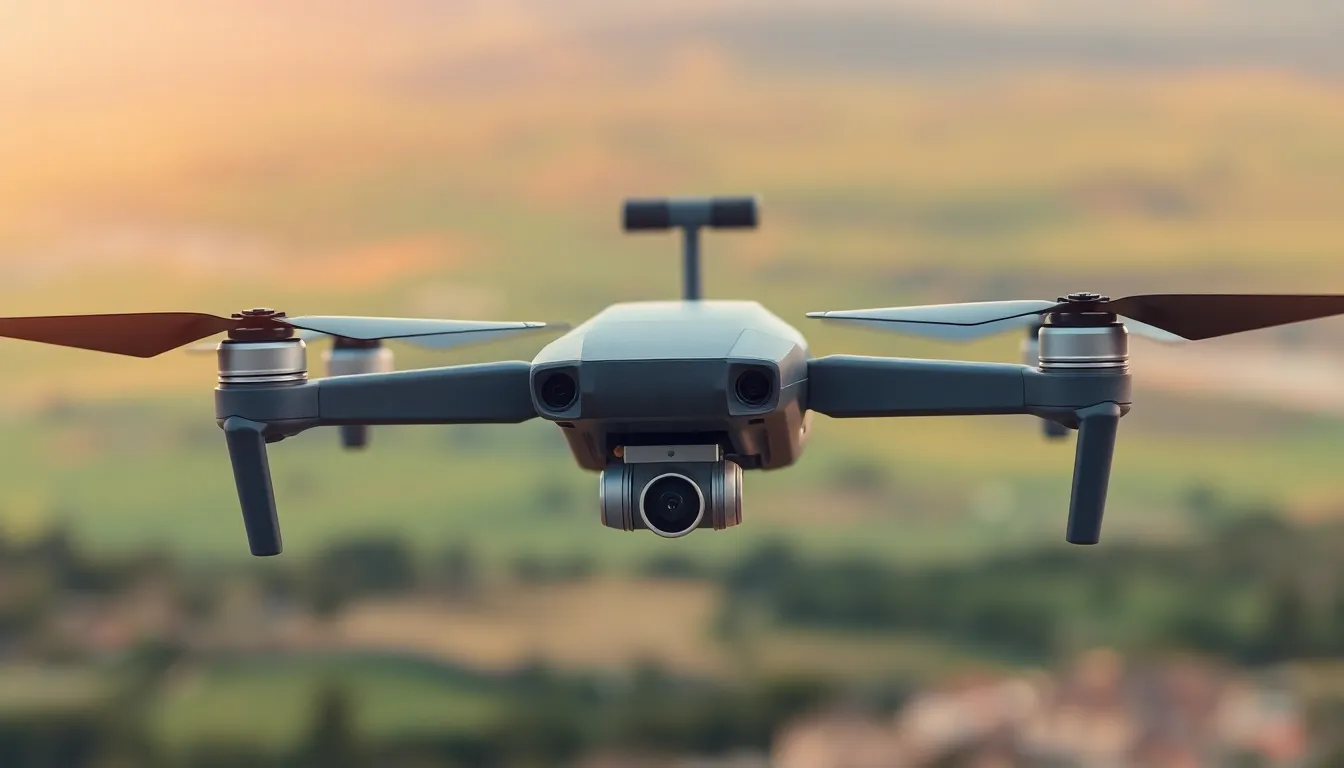In the world of drones, the flight controller is the unsung hero—think of it as the brain behind the brawn. While many marvel at a drone soaring through the sky, few realize it’s a sophisticated piece of tech that keeps everything in check. Whether it’s stabilizing a high-speed chase or executing a graceful aerial dance, a good flight controller makes all the difference.
Table of Contents
ToggleOverview of Drone Flight Controllers
Drone flight controllers serve as the core components, directing the operations of various drone systems. These devices interpret signals from the pilot and sensors, making immediate adjustments for stable flight. Most flight controllers integrate key features such as GPS, accelerometers, and gyroscopes, which help maintain altitude and orientation.
Some models offer additional capabilities for advanced maneuvers, such as waypoint navigation and obstacle avoidance. Popular flight controller brands include Pixhawk, DJI Naza, and Betaflight, each providing unique functionalities tailored to different types of drones.
Selecting the right flight controller depends on intended applications. For example, racing drones often require controllers with rapid response times and minimal latency. Conversely, aerial photography drones benefit from controllers focused on stability and GPS accuracy.
Installation involves connecting various components like motors, batteries, and receivers to the flight controller. Specific wiring diagrams and set-up procedures vary among manufacturers, thus it’s essential to follow the detailed instructions provided with each device.
Calibration stands out as a critical task, ensuring sensors function correctly for optimal performance. Pilots often perform initial calibrations prior to flight to align the flight controller settings with the drone’s operational needs.
Understanding the flight controller’s firmware proves fundamental for enhancing performance features. Frequent software updates from manufacturers introduce improvements and new capabilities, keeping the drones competitive in rapidly evolving markets.
Comprehensive knowledge about different flight controllers empowers users to make informed decisions for their drone setups. With the right flight controller, they can unlock the full potential of their UAVs, achieving both stability and precision in aerial applications.
Types of Drone Flight Controllers

Drones utilize various flight controllers tailored to their specific designs and intended applications. Understanding these types improves a user’s selection for optimal performance.
Fixed-Wing Controllers
Fixed-wing controllers excel in controlling the flight of fixed-wing drones. These controllers manage aerodynamic stability and facilitate long-range flights. Equipped with GPS, they ensure precise navigation. Users appreciate features like autopilot capabilities, which allow for hands-free operation during long missions. Advanced models include support for telemetry data, enhancing overall communication between the drone and operator. Examples of fixed-wing controllers encompass the ArduPilot and Vector, known for reliability in mapping and surveying tasks.
Multi-Rotor Controllers
Multi-rotor controllers dominate the drone market due to their versatility. They handle complex maneuvers and maintain stability during flights. These controllers often integrate features like altitude hold and position locking, making them ideal for photography and videography. Their compatibility with various sensors enhances functionality, allowing for obstacle avoidance and return-to-home features. Popular options in this category include the DJI Naza and Betaflight controllers, tailored for both hobbyists and professionals seeking performance in diverse environments.
Key Features of Drone Flight Controllers
Drone flight controllers incorporate essential features that enhance their performance and reliability during flight.
Stabilization Techniques
Stabilization techniques represent a core function of flight controllers. PID controllers, often utilized in these systems, adjust flight dynamics by calculating real-time data inputs. Advanced models may feature flight modes such as altitude hold and position hold, ensuring stability in varying conditions. Integration of sensors like accelerometers and gyroscopes enables precise detection of orientation and movement. Enhanced stabilization contributes to smoother flight and improved handling, particularly for beginners.
Navigation Systems
Navigation systems are integral for autonomous flight capabilities. GPS modules facilitate waypoint navigation, allowing drones to follow predetermined paths. Some systems utilize GLONASS for increased accuracy and faster satellite acquisition. Mapping features enable drones to create and execute flight plans efficiently. Many controllers also support return-to-home functions, enhancing safety by automatically guiding drones back to their starting point in low battery situations or signal loss.
Compatibility with Accessories
Compatibility with accessories significantly expands drone capabilities. Flight controllers support various add-ons, including cameras, telemetry devices, and additional sensors. Integration with camera gimbals allows for stabilized video capture during flight. Some controllers permit connection to external telemetry modules, providing real-time data monitoring and communication. Understanding compatibility options helps users maximize their drone’s potential, tailoring it to specific applications such as photography or racing.
Popular Drone Flight Controllers on the Market
Various flight controllers cater to users with different needs and skill levels. Options range from entry-level to professional solutions, each offering unique features and capabilities.
Entry-Level Options
Beginner-friendly flight controllers often appeal to hobbyists. Examples include the Eachine EP2 and the Flysky FS-i6. These controllers come with built-in stabilizers, making it easier for new pilots to maintain control. Incorporating basic features like altitude hold and simple waypoint navigation, they provide an accessible entry into drone piloting. Additionally, they typically support a variety of drones, enhancing versatility for users as they explore their flying skills. Budget-friendly, these options make it simple for anyone to start their drone journey.
Professional Solutions
For advanced users, professional flight controllers deliver enhanced performance and reliability. Models like the Pixhawk 2.4.8 and DJI A3 stand out with their sophisticated features. These controllers offer advanced GPS capabilities, supporting precise navigation and automated flight tasks. Integration with telemetry systems allows for real-time data monitoring, enhancing flight strategy and safety. Professional options also provide extensive customization through firmware updates, catering to the varying needs of commercial pilots. Emphasizing robustness and functionality, these controllers significantly improve the aerial experience for professionals.
Future Trends in Drone Flight Controllers
Increased automation stands at the forefront of future trends in drone flight controllers. With advancements in artificial intelligence, users can expect more intuitive flight behavior. Enhanced navigation features, including machine learning algorithms, will allow drones to adapt to different environments.
Greater emphasis on safety will lead to improved obstacle detection systems. These systems utilize advanced sensors, enabling drones to navigate complex environments without pilot intervention. Enhanced redundancy in flight control systems also enhances safety, ensuring stable operation even if one component fails.
Integration with 5G technology is another emerging trend. Lower latency allows for real-time data processing, significantly improving communication between pilots and their drones. This technology expands possibilities for remote operations, playing a crucial role in industries like agriculture and logistics.
Modular designs are gaining traction as they provide flexibility. Users can customize their drone flight controllers by swapping out components, tailoring performance to specific needs such as racing or photography. Furthermore, cloud connectivity will facilitate over-the-air updates, allowing controllers to install the latest firmware easily and enhance functionalities.
Sustainability concerns influence future designs, too. Energy-efficient components and eco-friendly materials will likely become standard in new flight controllers. Options for solar charging or energy harvesting could extend flight times, providing operational benefits for environmentally conscious users.
Lastly, the growth of the drone delivery industry demands flight controllers that can handle autonomous navigation. With this demand, software innovations focus on logistics and route optimization, facilitating the seamless delivery of goods in urban areas.
Understanding drone flight controllers is essential for anyone looking to maximize their UAV experience. These advanced systems serve as the heart of drone operation, ensuring stability and precision in flight. With a variety of options available, from entry-level to professional models, users can find controllers that meet their specific needs.
As technology continues to evolve, the future of flight controllers looks promising. Innovations in AI and 5G will enhance automation and communication, paving the way for safer and more efficient drone operations. By staying informed about these developments, pilots can better navigate the dynamic landscape of drone technology, unlocking new possibilities in aerial applications.




